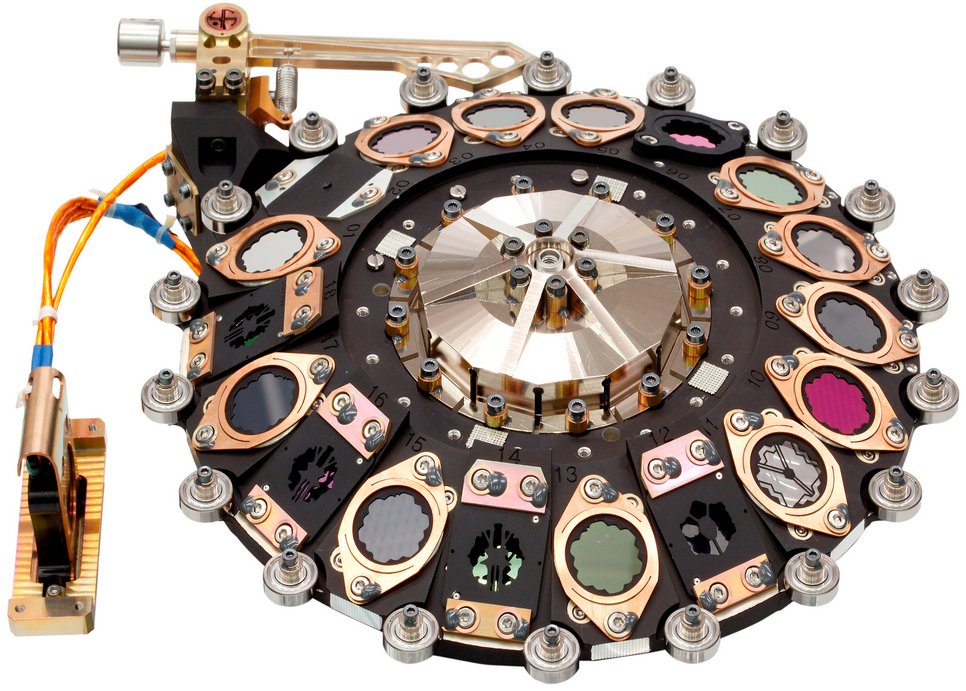JWST’s MIRI Team receives prestigious award from the Royal Astronomical Society
The Royal Astronomical Society (RAS) in the United Kingdom (UK) announced today that the prestigious Group Achievement Award has been granted to the international Mid InfraRed Instrument (MIRI) team in honour of their work on the James Webb Space Telescope (JWST). The Max Planck Institute for Astronomy (MPIA) has played a major role in this great success through its many significant contributions. The award recognises the team’s impressive achievement in bringing such a lengthy and complex international project to successful fruition, and the scientific results emerging from MIRI that their work has enabled.

Developed over two decades, JWST is the most powerful telescope ever launched into space. MIRI’s spectacular images and scientific data are redefining our understanding of the cosmos, offering new insights into the atmospheres of planets beyond our Solar System and providing new data on star and galaxy formation.
MIRI is one of four scientific instruments on board JWST and is the only one operating at mid-infrared wavelengths (5 – 28 microns). By adding the mid-infrared capability in imaging, spectroscopy and coronagraphs, MIRI greatly expands the range of science that the observatory can do. MPIA is one of the leading partners in the European MIRI consortium and has contributed both technologically and scientifically.
International collaboration
MIRI was developed by an international team bringing together institutes across ten European countries and the US. Gillian Wright from the Science and Technology Facilities Council’s (STFC) UK Astronomy Technology Centre (UK ATC) and George Rieke from the University of Arizona worked together closely to lead the team endeavour.
Gillian Wright, Director at UK ATC and the European Principal Investigator on MIRI, said: “The team were convinced that MIRI was important and would bring new information over a broad range of science. It is wonderful for everyone who worked on MIRI to see that their work is recognised by the RAS. I’d like to thank all those involved with this groundbreaking project for their hard work and dedication over many years. MIRI was only possible through the collaboration of people across Europe and the USA working together with a shared scientific goal.”
MPIA’s crucial contributions

Thomas Henning, Director at MPIA and MIRI Co-Investigator, said: “Congratulations to the MIRI team on winning this well-deserved award. After decades of tremendous efforts, we are now harvesting the scientific fruits, which by no small amount is also the result of my inspired and gifted colleagues at MPIA.”
MPIA engineers, supported by Hensoldt in Oberkochen, developed, among other parts, a filter wheel for the MIRI camera and two grating wheels for the MIRI spectrograph. “We are proud to have contributed to MIRI’s overwhelming success. Our team at MPIA consists of some of the best engineers in astronomy instrumentation,” said Oliver Krause. He is the head of the research group for Infrared Space Astronomy at MPIA and is responsible for the institute’s technical contributions. In addition, MPIA assumed the lead regarding developing MIRI’s electrical system.
Additional information
The MIRI consortium consists of the ESA member states Belgium, Denmark, France, Germany, Ireland, the Netherlands, Spain, Sweden, Switzerland, and the United Kingdom.
JWST is the world’s premier space science observatory. It is an international program led by NASA with its partners, ESA (European Space Agency) and CSA (Canadian Space Agency).
The consortium's work is funded by the national science organisations – in Germany by the Max Planck Society (MPG) and the German Aerospace Center (DLR). The participating German institutions are the Max Planck Institute for Astronomy in Heidelberg, the University of Cologne, and Hensoldt AG in Oberkochen, formerly Carl Zeiss Optronics.




